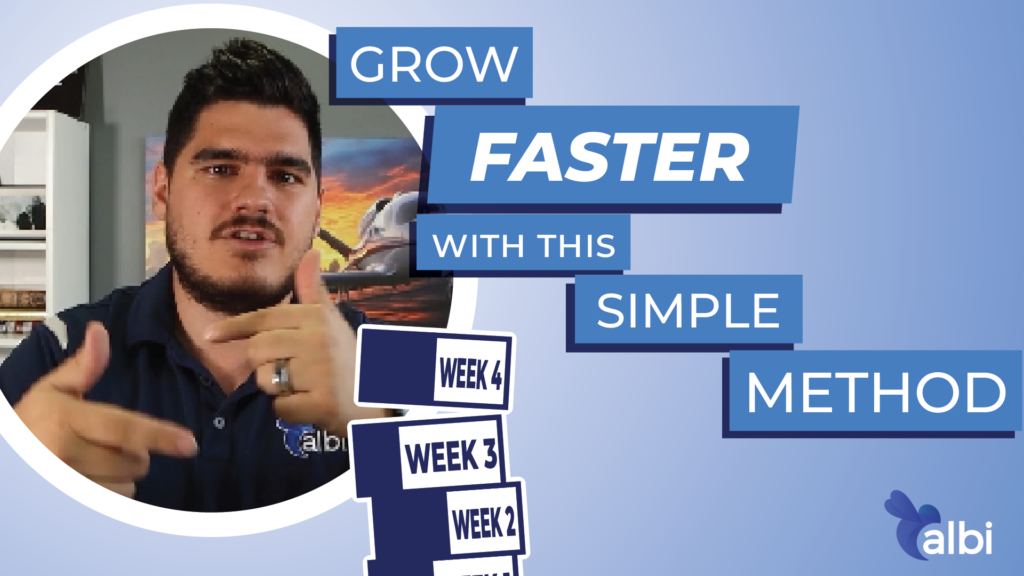Implementing Stacking Growth to Your Everyday Business
Last updated: June 22nd, 2023

Contents
I grew and scaled a restoration company from my dad’s garage to over eight figures. One of the ways I accomplished this was by applying the concept of “Stacking Growth.” It’s the concept of taking one thing you’ve learned, growing upon it, and stacking it as you continue learning new concepts. It’s a set of tools and solutions that work together to achieve specific outcomes.

The main goal of stacking growth is to minimize “tool fatigue” and help you win back your employees’ time and energy – and your customers’ recurring business. For example, if you want your company to achieve a sales goal, imagine taking a new sales technique (something you’ve come to find has been able to work for your company). You’ve learned it and mastered it. Now you take new concepts you’ve learned and build upon them. This technique helps lead to reaching your overall sales goal. The concept works like a snowball effect; it starts as a snowflake (an idea) and gets bigger as more snowflakes accumulate, eventually turning into a snowball. So essentially, the more learning methods you adopt, the better it will be to help CRUSH those goals!
Watch on YouTube!
The Importance of Developing a Business Plan
If you haven’t done so already, you should develop a business plan and establish a couple of goals and major business objectives. You need to know which direction you’re going to determine how you will get there.
If possible, I would recommend attending Violand’s business retreat, they are held annually, and they provide great tools on how to develop a business plan. In retreats like Violand’s and even in EOS they teach setting Major Business Objectives that you work on quarterly. These can be big milestones, like implementing a new system. They teach setting hard deadlines at the end of those quarters for those things to be met.
Growth stacking is the principle of taking those major business objectives and breaking them up into small pieces that you can do on a weekly basis. The principles of compounding interest do an incredible job of explaining why this is effective. Let’s take an arbitrary dive into comparing monthly vs. weekly implementations in the scenarios below.
Weekly to Annual Goals:
Let’s say we adopt the stacking growth concept effectively, and we execute a 10% increase every single week. This increase is figurative and can be any increase within our business processes. Instead of implementing a new system at the end of the quarter, we’ve implemented a small piece of it every week.
-
1.10^52= 142
-
1.10 represents a 10% increase each week in applying something to your business.
-
We’re using 52 to represent 52 weeks in a year.
-
142 represents that total output.
Quarterly to Annual Goals:
Let’s say we apply the same increases above quarterly. That is 130% of the impact quarterly (the same value of 10% for 13 weeks in a quarter). This is an example of doing a massive project with a due date at the end of the quarter.
-
2.3 ^ 4 = 27.98
-
2.3 represents 100%+130%. 130% is a 10% increase for 13 weeks in a quarter.
-
^4 represents these things getting applied quarterly.
-
27.98 represents the total arbitrary output.
If you set weekly goals and develop a well-thought-out plan that’s strategic and intentional, you’ll see the changes. Set some simple goals where you’re making a change to your business weekly. You’ll have 5X (142/27.98 = 5.08) more output by the end of the year.
To put this into perspective, many financial planners recommend adding weekly contributions to your retirement fund rather than making a lump sum contribution. Suppose you have an Individual Retirement Account (IRA) that maxes out at 6,000 dollars that year, and you back that same amount in a lump sum. It might NOT be as effective as putting in $100 each week. This method, called dollar costing, allows you to spread out payments instead of putting down a lump sum. While both strategies have pros and cons, dollar costing has proven to perform better, especially during high market crashes. This is the same way you should think about your business.
How We Apply Stacking Growth at Albi?
We use this same strategy at Albi. We have three managers dedicated to taking one thing they’ve learned and implementing it every week. You don’t just focus on the concept that week and then forget it the following week. On the contrary, you use THAT concept and add new ones to it. As a leader, it’s gratifying to see the results firsthand because they are truly remarkable.
So take a chance, try it out for yourself, and try this method out with your own business. Imagine implementing one thing every week and achieving one goal after another. Make sure everyone on your team gets familiar with this concept, and you’ll see how much closer you are to crushing those quarterly or yearly goals!
What you should do now
- Get a Free Demo and see how Albiware can help solve your restoration software challenges.
- Read more articles in our blog.
- If you know someone who’d enjoy this article, share it with them via Facebook, Twitter, LinkedIn, or email.